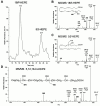Novel functional sets of lipid-derived mediators with antiinflammatory actions generated from omega-3 fatty acids via cyclooxygenase 2-nonsteroidal antiinflammatory drugs and transcellular processing
- PMID: 11034610
- PMCID: PMC2195872
- DOI: 10.1084/jem.192.8.1197
Novel functional sets of lipid-derived mediators with antiinflammatory actions generated from omega-3 fatty acids via cyclooxygenase 2-nonsteroidal antiinflammatory drugs and transcellular processing
Abstract
Aspirin therapy inhibits prostaglandin biosynthesis without directly acting on lipoxygenases, yet via acetylation of cyclooxygenase 2 (COX-2) it leads to bioactive lipoxins (LXs) epimeric at carbon 15 (15-epi-LX, also termed aspirin-triggered LX [ATL]). Here, we report that inflammatory exudates from mice treated with omega-3 polyunsaturated fatty acid and aspirin (ASA) generate a novel array of bioactive lipid signals. Human endothelial cells with upregulated COX-2 treated with ASA converted C20:5 omega-3 to 18R-hydroxyeicosapentaenoic acid (HEPE) and 15R-HEPE. Each was used by polymorphonuclear leukocytes to generate separate classes of novel trihydroxy-containing mediators, including 5-series 15R-LX(5) and 5,12,18R-triHEPE. These new compounds proved to be potent inhibitors of human polymorphonuclear leukocyte transendothelial migration and infiltration in vivo (ATL analogue > 5,12,18R-triHEPE > 18R-HEPE). Acetaminophen and indomethacin also permitted 18R-HEPE and 15R-HEPE generation with recombinant COX-2 as well as omega-5 and omega-9 oxygenations of other fatty acids that act on hematologic cells. These findings establish new transcellular routes for producing arrays of bioactive lipid mediators via COX-2-nonsteroidal antiinflammatory drug-dependent oxygenations and cell-cell interactions that impact microinflammation. The generation of these and related compounds provides a novel mechanism(s) for the therapeutic benefits of omega-3 dietary supplementation, which may be important in inflammation, neoplasia, and vascular diseases.
Figures




References
-
- De Caterina R., Endres S., Kristensen S.D., Schmidt E.B. n-3 Fatty Acids and Vascular Disease 1993. Springer-Verlag; London: pp. 166
-
- Lands W.E.M. Proc. AOCS Short Course on Polyunsaturated Fatty Acids and Eicosanoids 1987. American Oil Chemists' Society; Champaign, IL: pp. 574
-
- Billman G.E., Kang J.X., Leaf A. Prevention of sudden cardiac death by dietary pure ω-3 polyunsaturated fatty acids in dogs. Circulation. 1999;99:2452–2457. - PubMed
-
- Simopoulos A.P., Leaf A., Salem N., Jr. Workshop on the Essentiality of and Recommended Dietary Intakes for Omega-6 and Omega-3 Fatty Acids. J. Am. Coll. Nutr. 1999;18:487–489. - PubMed
Publication types
MeSH terms
Substances
Grants and funding
LinkOut - more resources
Full Text Sources
Other Literature Sources
Medical
Molecular Biology Databases
Research Materials

